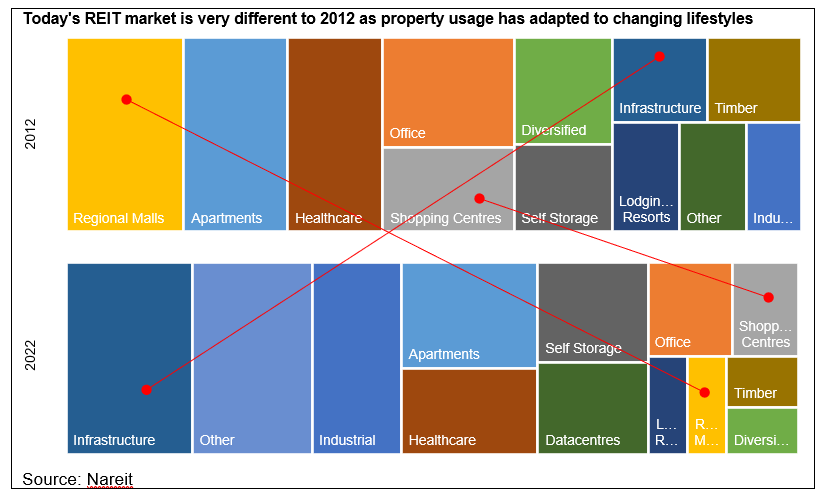SKAGEN m2 launched on 31 October 2012 to become SKAGEN's fourth equity fund, following Vekst (1993), Global (1997) and Kon-Tiki (2002). The fund, which invests in property companies listed on stock exchanges around the world, was our first fund launch for over ten years.
SKAGEN Co-Founder, Kristoffer Stensrud, outlined the rationale of applying our active, value-based philosophy to real estate investment at the time: "SKAGEN’s global approach combined with property companies and local markets is a good starting point for generating excess value. There is a world of undetected opportunities out there.”
The fund has delivered on this promise, generating strong annualised returns of 5.1% in EUR and beating its benchmark index over the same 10-year period[1]. Michael Gobitschek, who has managed SKAGEN m2 since launch, reflects on the fund's development: "SKAGEN m2 started life largely with seed capital from SKAGEN employees and has grown over the years from solid investment performance and the backing of clients internationally. I'm delighted that they have been rewarded thanks to the successful application of SKAGEN's investment philosophy to real estate assets and our disciplined stock selection."
Market transformation
SKAGEN m2 launched into a challenging market with weakening economic growth globally and mounting debt problems in Southern Europe. A decade on and the economic outlook is similarly gloomy but the fund's investment universe has expanded dramatically.
The global market capitalisation of Real Estate Investment Trusts (REITs) has more than doubled in size to $1.4 trillion (2012: $603 billion) while the value of commercial real estate owned by REITs has more than quadrupled to $3.5 trillion (2012: $860 billion)[2].
The market's composition has also changed enormously in ten years. A look at the US shows how traditional retail[3] has shrunk from 24% to 7%; the same size as data centres which didn't feature at all a decade ago. Infrastructure has also grown dramatically, from 6% to 17% of the market. (see chart).

These shifts reflect changing patterns in lifestyle and behaviour, as Gobitschek explains: "The listed real estate market is very dynamic. COVID has also accelerated some trends such as the shift to online shopping at the expense of traditional retail and introduced others like hybrid working away from the office. Our job as investors is to find the best value companies across trend-driven sub-segments."
Why invest in listed real estate?
Although the market is different, the investment case remains the same and just as strong a decade on – here are the five main reasons to invest in global listed real estate.
1. Favourable total return profile with predictable cash flow and potential for capital gains and inflation protection
A particular benefit of listed real estate in the current environment is that it has historically performed strongly during periods of higher inflation, thanks to rental income often being CPI-linked and rising asset prices. Research looking at the past 50 years shows that US REITs have outperformed the S&P 500 by around 3% during times of moderate inflation and 5% in higher inflationary periods[4].
2. Improved risk / return profile due to declining long-term correlation with equities
Real estate sits between equity and fixed income on the risk/reward scale. While listed real estate returns are more closely correlated with equities short-term, performance longer-term (>18 months) is more closely linked to direct real estate, offering good upside and portfolio diversification potential[5].
3. Transparency, governance and liquidity
While several direct real estate funds have faced criticism recently for shuttering in the face of investor redemptions, listed real estate offers daily liquidity and the same regulatory protection, disclosure requirements and corporate governance as other publicly traded companies.
4. Multiple layers of diversification
With real estate returns often driven by local factors, it offers investors good geographic diversification. Property segments also have different performance drivers and many attractive sub-segments such as healthcare and hotels can only be accessed via listed companies without huge sums to invest.
5. Exposure to economic growth globally, megatrends and non-traditional real estate
Real estate offers a good way for investors to gain exposure to rising economic activity, for example via offices, retail and hospitality. The large investment universe also allows exposure to more defensive segments such as data centres, logistics and self-storage in times of contraction.
[1] As at 30/09/2022 in EUR, net of fees.
[2] Source: NAREIT, commercial real estate ownership includes public listed, public non-listed, private equity and Mortgage
[3] Regional Malls and Shopping Centres
[4] Source: Nareit analysis of prices for the FTSE Nareit All Equity REIT Index and S&P 500 Index: 1972-2021. Inflation measured for all items, all urban consumers. Moderate Inflation 2.5% - 7%, High Inflation >7%.
[5] Source: Cornerstone Research based on data from NAREIT, S&P, NCREIF and the MIT Center for Real Estate. Rolling Returns, Quarterly Data 1984:2‐2014:4




